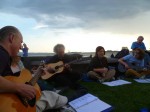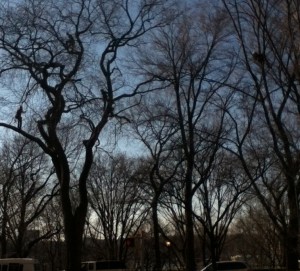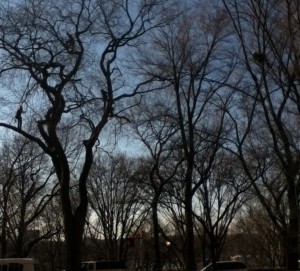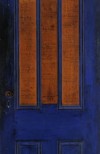Sunset Singing Circle in Battery Park with Terre Roche, June 8
 Last evening Kyle and Ewan and I took part in a New York summer ritual, the Sunset Singing Circle led by Terre Roche, one of the three singing Roche sisters, from longtime fave group, The Roches, whose “Hammond Song” I am listening to right now, with its lovely theremin-like sounding lead instrument, joined to the trio’s arcing harmonies. I recently read and enjoyed sister Suzzy’s splendid novel of music and redemption, Wayward Saints, and it’s been great being in touch with her and Terre on Facebook and through this blog.
Last evening Kyle and Ewan and I took part in a New York summer ritual, the Sunset Singing Circle led by Terre Roche, one of the three singing Roche sisters, from longtime fave group, The Roches, whose “Hammond Song” I am listening to right now, with its lovely theremin-like sounding lead instrument, joined to the trio’s arcing harmonies. I recently read and enjoyed sister Suzzy’s splendid novel of music and redemption, Wayward Saints, and it’s been great being in touch with her and Terre on Facebook and through this blog.
The Sunset Singing Circle is held at the tip of lower Manhattan, facing New York harbor and the Statue of Liberty. It is a grand place to listen to music as evening falls. Notebooks, including lyrics to more than 100 songs, are shared among folks sitting on the grass, with guitar players and people like the three of us offering up requests from among these selections. Last night we sang “The Weight,” in honor of a memorial Ramble being held tonight in memory of Levon Helm; “Happy Trails;” “The Times They are a Changin’;” “Bird on a Wire;” “The City of New Orleans,” among many others, and following a brief but heavy downpour, “Somewhere Over the Rainbow,” and “You Are My Sunshine.” Wet as it was for a while, everyone was stalwart, even the guitar players whose instruments were being rained upon. After the sun shower ended, a real rainbow emerged out of the eastern sky and a considerate Parks Dept. staffer offered towels for people to dry their instruments and seat cushions. It was a special New York night. Click through for all photos.





